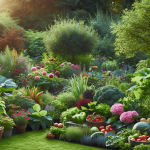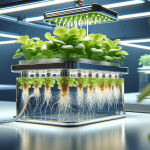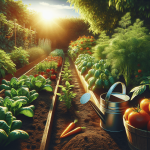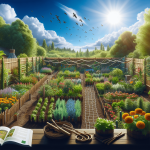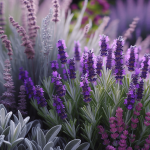This post may contain affiliate links. As an Amazon Associate, we may earn commissions from qualifying purchases.
Have you ever wondered what it takes to turn your greenhouse into a lush paradise brimming with healthy, thriving plants? Whether you’re a seasoned gardener or just getting your hands dirty for the first time, mastering the art of greenhouse gardening can be both rewarding and a bit daunting. However, by following some tried-and-true best practices, you can ensure your plants are not only surviving but flourishing.
Understanding Your Greenhouse Environment
Before we get into specific practices, it’s crucial to grasp the unique environment of a greenhouse. Unlike outdoor gardening, a greenhouse provides a controlled setting where you can optimize temperature, humidity, and light to give your plants ideal growing conditions. Essentially, think of yourself not just as a gardener, but as a mini-climate engineer.
Temperature Control
Getting the temperature right is one of the first steps in creating a conducive environment for your plants.
- Day vs. Night Temperatures: Plants generally prefer varying temperatures between day and night. This helps mimic their natural outdoor conditions.
- Thermometers and Sensors: Invest in reliable thermometers and climate sensors to monitor and adjust the temperature.
- Heating and Cooling: Use electric heaters, gas heaters, or even oil heaters during colder months. For cooling during hot periods, consider automated vent systems, shade cloths, or even evaporative coolers.
Humidity Management
Humidity plays a pivotal role in plant health. Too much moisture can result in mold, while too little can dry out your plants.
- Monitoring Devices: Hygrometers can help you keep an eye on humidity levels.
- Misting Systems: These are great for increasing humidity quickly.
- Dehumidifiers and Fans: Use these tools to reduce humidity when necessary.
Adequate Lighting
Lighting can make or break your greenhouse gardening efforts. Plants need sufficient light for photosynthesis, and different plants have different light requirements.
| Plant Type | Light Requirement |
|---|---|
| Leafy Greens | Low to Medium |
| Fruiting Plants (Tomatoes) | Medium to High (8+ hrs/day) |
| Flowering Plants | High (Minimum 6 hrs/day) |
- Natural Light: Utilize natural sunlight to the fullest. The orientation of your greenhouse matters—ideally, it should face south.
- Supplemental Lighting: For days when sunlight is scarce, use grow lights, LED lights, or fluorescent lights to meet your plant’s light needs.
Soil or Hydroponics?
Once you’ve mastered the environment, the next decision is whether to grow your plants in soil or use a hydroponic system. Both methods have their advantages.
Soil-based Growing
Soil is the traditional growing medium and is often easier for beginners.
- Quality Soil Mixtures: Use high-quality potting soil that provides good drainage and aeration. Add compost for extra nutrients.
- Regular Testing: Regularly test your soil’s pH and nutrient levels to ensure it meets your plants’ needs.
Hydroponics
Hydroponics involves growing plants in nutrient-rich solutions rather than soil. It’s efficient but requires more initial setup.
- Types of Systems: Choose between nutrient film technique (NFT), deep water culture (DWC), and drip systems.
- Nutrient Solutions: Invest in premixed nutrients or DIY your own mixes. Monitor the pH and electrical conductivity (EC) regularly.
Choosing the Right Plants
Not all plants are created equal when it comes to greenhouse growing. While almost anything can be grown, some plants are better suited than others.
Easy Plants for Beginners
If you’re just starting, it’s a good idea to begin with plants that are known to thrive in greenhouse conditions and require less maintenance.
- Herbs: Basil, mint, and cilantro are all excellent choices.
- Vegetables: Tomatoes, lettuce, and cucumbers often do well.
- Flowers: Marigolds, petunias, and fuchsias are relatively easy and rewarding.
Advanced Plants for the Experienced Gardener
For those with a bit more experience, you can try your hand at growing more challenging plants like orchids, exotic fruit trees, or rare medicinal herbs.
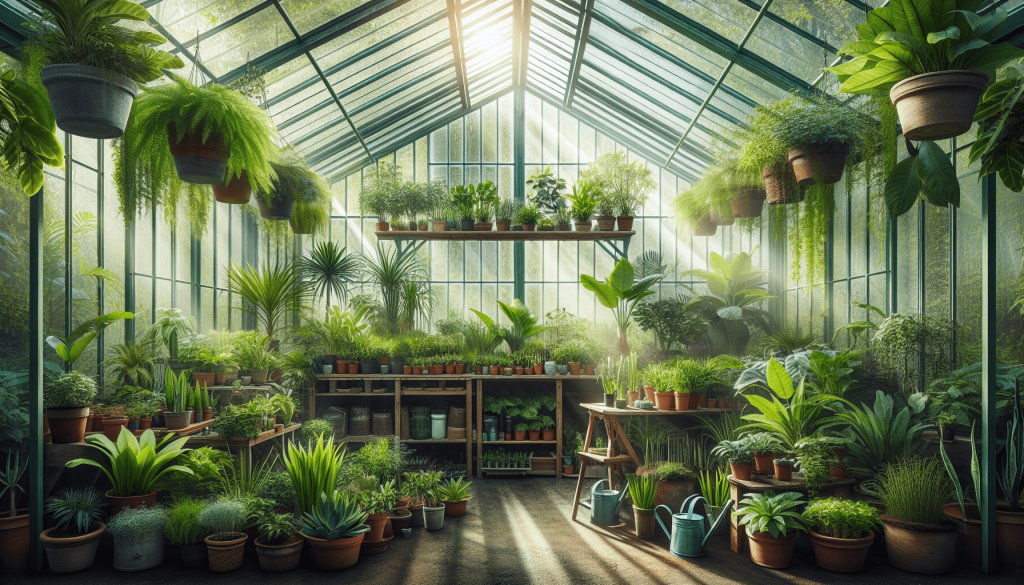
Proper Watering Techniques
Watering is more than just keeping the soil wet. Proper watering techniques can prevent issues like root rot and mold.
Frequency and Amount
Different plants have different water needs, and it’s essential to find a balance.
- General Rule: Water deeply but less frequently. It’s more beneficial than surface watering.
- Check Soil Moisture: Use your fingers or moisture meters to gauge the soil’s moisture content.
Water Quality
Believe it or not, the quality of water you use can impact your plants significantly.
- Filtered Water: Use filtered water or let tap water sit out for 24 hours to remove chlorine.
- Rainwater Harvesting: Rainwater is generally free of salts and chemicals, making it great for plants.
Fertilization Practices
Correct fertilization can give your plants a much-needed boost. But remember, more isn’t always better.
Types of Fertilizers
Organic and synthetic fertilizers both have their place in greenhouse gardening.
- Organic: Compost, bone meal, and fish emulsion slowly release nutrients and improve soil health.
- Synthetic: These offer a quick nutrient boost and are usually more precise in their nutrient ratios.
Application Methods
- Foliar Feeding: Spraying a nutrient solution directly onto leaves allows for faster absorption.
- Soil Amendment: Incorporate slow-release granules into your soil.
Pest and Disease Management
A greenhouse can provide a haven from many pests but is not entirely immune to problems.
Common Pests
- Aphids: These tiny insects can be controlled with neem oil or insecticidal soap.
- Spider Mites: These require higher humidity and regular spraying to be kept at bay.
- Whiteflies: Use yellow sticky traps to catch these pesky intruders.
| Pest | Control Method |
|---|---|
| Aphids | Neem oil, insecticidal soap |
| Spider Mites | Increase humidity, miticides |
| Whiteflies | Yellow sticky traps |
Common Diseases
- Powdery Mildew: Reduce humidity and use a fungicide.
- Botrytis: Known as “gray mold,” it requires removing affected parts immediately and increasing airflow.
Protective Measures
- Biological Controls: Introduce beneficial insects like ladybugs to control pest populations.
- Sanitation: Always clean your tools and remove dead plant material regularly.
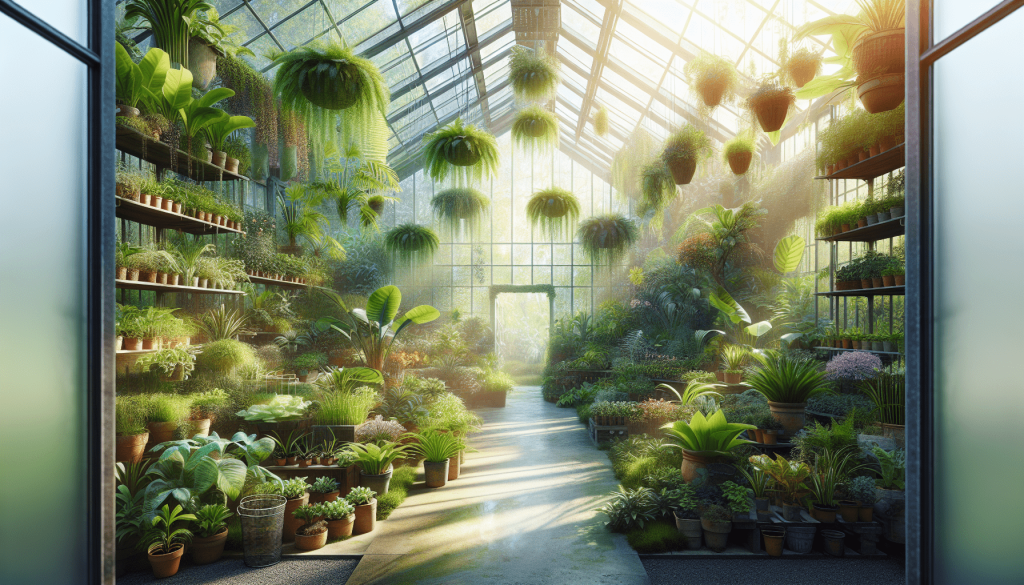
Pruning and Training
Pruning and training aren’t just for aesthetic purposes. They can significantly impact your plants’ health and productivity.
Why Prune?
- Increase Airflow: This reduces the risk of diseases.
- Encourage Growth: Proper pruning can stimulate new growth and lead to higher yields.
Training Techniques
- Trellising: Support vining plants like tomatoes with trellises.
- Pinching: For bushier growth, pinch the tips of young plants.
Crop Rotation and Succession Planting
If you’re planning to grow plants year-round, consider these techniques to boost productivity and soil health.
Crop Rotation
Rotating your plants helps prevent soil depletion and pest buildup.
Succession Planting
Plant crops in staggered intervals to ensure a continuous harvest.
The Role of CO2
Plants need CO2 for photosynthesis, and in a closed greenhouse, CO2 levels can become a limiting factor.
How to Increase CO2
- CO2 Generators: These devices can release controlled amounts of CO2.
- Simple Methods: Even placing buckets of compost can release CO2 naturally.
Seasonal Adjustments
Your greenhouse will require different strategies depending on the season.
Winter
- Heating: Insulate your greenhouse and use heaters to maintain the temperature.
- Lighting: Shorter days mean you’ll need supplemental lighting for adequate plant growth.
Summer
- Cooling: Use shade cloths and ventilation to prevent overheating.
- Watering: Increased temperatures mean your plants may need more frequent watering.
Using Technology
Harness the power of modern technology to make your gardening efforts more efficient.
Automation
Automated systems can take over routine tasks, freeing up your time.
- Irrigation: Automated drip irrigation systems ensure consistent watering.
- Climate Control: Automated venting and heating systems can regulate temperature and humidity efficiently.
Monitoring Tools
- Sensors: Soil moisture, light, and temperature sensors can provide real-time data to help you make informed decisions.
- Apps: Many gardening apps can track your plants’ progress and offer reminders for tasks like watering and pruning.
Personal Touches
In the end, don’t forget that gardening is also an art. Add your touches, experiment, and, most importantly, enjoy the process.
Custom Plant Labels
Use custom plant labels for easy identification and an added personal flair.
The Gardening Journal
Keeping a garden journal can help you track what works and what doesn’t, turning mistakes into learning opportunities.
Final Thoughts
Greenhouse gardening offers a wonderful blend of science and creativity. By following these best practices, you’ll be well on your way to creating a thriving, green oasis regardless of the weather outside. Remember, every garden is unique, so feel free to adapt these tips to suit your specific needs. Happy gardening!
There you have it—a blueprint to becoming a more effective greenhouse gardener. What practice are you looking forward to implementing the most?



